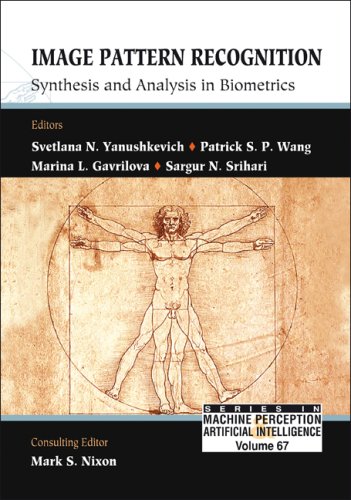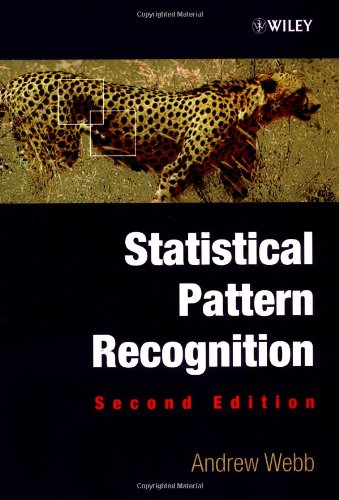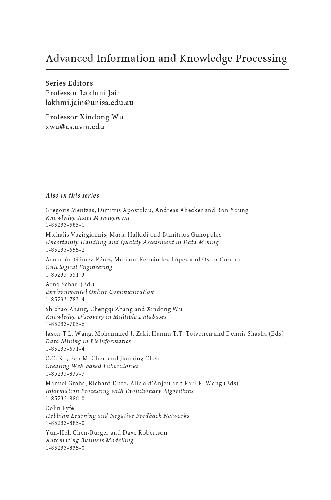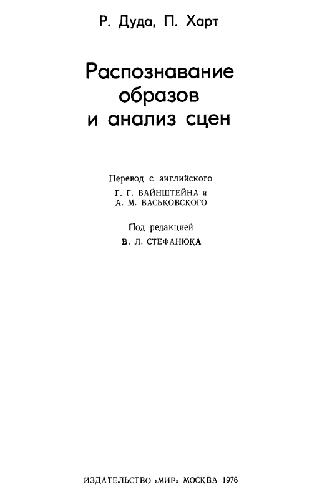Svetlana N. Yanuschkevich, Patrick S. P. Wang, Marina L. Gavrilova, Sargur N. Srihari9789812569080, 9812569081
Table of contents :
Contents……Page 20
Preface……Page 6
Acknowledgments……Page 18
PART 1: SYNTHESIS IN BIOMETRICS……Page 24
Contents……Page 28
1.1. Introduction……Page 29
1.1.1. Basic Paradigm of Synthetic Biometric Data……Page 30
1.2.1. Image Synthesis……Page 32
1.3.1. Synthetic Fingerprints……Page 33
1.3.2. Synthetic Signatures……Page 35
1.3.3. Synthetic Retina and Iris Images……Page 36
1.3.6. Synthetic Faces……Page 39
1.3.6.1. Animation as Behavioral Face Synthesis……Page 41
1.3.6.2. Caricature as Synthetic Face……Page 42
1.4.1. Testing……Page 43
1.4.3. Humanoid Robots……Page 44
1.4.5. Synthetic Biometric Data in the Development of a New Generation of Lie Detectors……Page 45
1.4.6. Synthetic Biometric Data in Early Warning and Detection System Design……Page 46
1.6. Ethical and Social Aspects of Inverse Biometrics……Page 47
Bibliography……Page 48
2. Signature Analysis, Veri.cation and Synthesis in Pervasive Environments Denis V. Popel……Page 54
2.1. Introduction……Page 55
2.2. Signature Representation……Page 57
2.3. Signature Comparison……Page 59
2.3.1. Sequence Alignment……Page 60
Alignment of continuous sequences……Page 63
2.3.2. Algorithm and Experimental Results……Page 66
2.4.1. Signature Synthesis Techniques……Page 70
2.4.2. Statistically Meaningful Synthesis……Page 71
2.4.3. Geometrically Meaningful Synthesis……Page 72
2.4.4. Algorithm and Experimental Results……Page 77
2.5. System Architecture……Page 78
2.6. Concluding Remarks and Future Work……Page 82
Bibliography……Page 85
Contents……Page 88
3.1. Introduction……Page 89
3.2. Wavelets and Multiresolution Background……Page 90
3.3. Review of Construction……Page 93
3.4.2. Cubic B-Spline Filters: Inverse Powers of Two……Page 98
3.5. Extraordinary (Boundary) Filters……Page 99
3.5.1. Boundary Filters for Cubic B-Spline……Page 100
3.5.1.1. Construction of A……Page 101
3.5.1.2. B and Q……Page 102
3.6. Efficient Algorithm……Page 103
3.7.1. Periodic (Closed) Curves……Page 105
3.7.3. 2D Images……Page 107
3.7.3.1. Symmetric Extension……Page 108
3.8. Results, Examples and Applications……Page 111
3.8.1. Example Applications……Page 112
3.8.2. Iris Synthesis……Page 114
3.8.3. Real-Time Contextual Close-up of Volumetric Data……Page 116
Bibliography……Page 118
Contents……Page 126
4.1. Introduction……Page 127
4.3. Chapter Overview……Page 129
4.4. Biometric System Architecture……Page 130
4.5. Computational Geometry Methods in Biometrics……Page 131
4.5.1. Voronoi Diagram Techniques in Biometrics……Page 132
4.5.1.1. Voronoi Diagram Preliminaries……Page 133
4.5.1.2. Voronoi Diagrams in Fingerprint Matching……Page 136
4.5.1.3. Delaunay Triangulation for Fingerprint Matching and Deformation Modeling……Page 137
4.5.1.4. System Implementation and Experiments……Page 140
4.5.2.1. Weighted Distance Metrics for Establishing the Biometric Threshold……Page 141
4.5.2.2. Distance Transform Preliminaries……Page 143
4.5.2.3. Face Modeling using Distance Transform……Page 144
4.5.2.4. Distance Transform for Ridge Extraction……Page 146
4.5.2.6. Distance Transform for Pattern Matching……Page 147
4.5.3.1. Topology-Based Approximation of Image for Feature Extraction along the Boundary……Page 149
4.5.3.2. Edge Detection for Feature Lines……Page 150
4.5.4. Topology-Based Approach for Generation and Synthesis of New Biometric Information……Page 151
Bibliography……Page 153
PART 2: ANALYSIS IN BIOMETRICS……Page 158
Contents……Page 162
5.1. Introduction……Page 163
5.2. Discriminating Elements and Similarity……Page 164
5.3. Statistical Formulation……Page 165
5.3.1. Gaussian Case……Page 167
5.3.2. Gamma Case……Page 169
5.3.3. Mixture Model Case……Page 170
5.3.4. Strength of Evidence……Page 171
5.4.1. Fingerprint Verification……Page 172
5.4.1.1. ROC Method of Learning……Page 173
5.4.1.2. Parametric Learning using Gamma Distributions……Page 175
5.4.2. Writer Verification……Page 176
Bibliography……Page 179
Contents……Page 182
6.1. Introduction……Page 183
6.2. Simple Distances Between Signatures……Page 184
6.2.1. Simple Direct Comparison: Global Relative Distance……Page 185
6.2.2. Temporal Distance……Page 186
6.3.1. Results: Trial 1……Page 188
6.4.1. Slope Histograms……Page 189
6.4.2. Shadow Masks……Page 191
6.4.3. Intermediate Results……Page 192
6.5. Composite Classifiers……Page 193
6.5.1. Merging Type 1 Responses……Page 194
6.5.2. Merging Type 2 Responses……Page 196
6.5.4. Results from the Multiple Classifier……Page 199
6.5.5. Further Classifier Combination Techniques……Page 200
6.5.6. Empirical Evaluation……Page 201
6.6. Conclusions……Page 202
Acknowledgments……Page 203
Bibliography……Page 204
7. Force Field Feature Extraction for Ear Biometrics David Hurley……Page 206
7.1. Introduction……Page 207
7.2. Ear Topology……Page 209
7.3. The Force Field Transforms……Page 210
7.3.1. Transformation of the Image to a Force Field……Page 211
7.3.2. The Energy Transform for an Ear Image……Page 213
7.4. Force Field Feature Extraction……Page 215
7.4.1. Field Line Feature Extraction……Page 216
7.4.2. Dome Shape and Brightness Sensitivity……Page 217
7.4.3. Convergence Feature Extraction……Page 218
7.5. Ear Recognition……Page 222
7.5.1. Experiment Results and Analysis……Page 224
Bibliography……Page 227
8. Nontensor-Product-Wavelet-Based Facial Feature Representation Xinge You, Qiuhui Chen, Patrick Wang, Dan Zhang……Page 230
8.1. Introduction……Page 231
8.2. Construction of Nontensor Product Wavelet Filters Banks……Page 234
8.2.1. Characteristics of Centrally Symmetric Orthogonal Matrix……Page 235
8.2.2. Nontensor Product Wavelet Filter……Page 237
8.2.3. Examples……Page 239
8.3. Experimental Results……Page 240
8.4. Conclusions……Page 244
Bibliography……Page 245
Contents……Page 248
9.1. Introduction……Page 249
9.2. Palmprint Images Collection and Preprocessing……Page 251
9.3. Wavelet Based Feature Extraction……Page 254
9.4. Palmprint Feature Matching and Decision Fusion……Page 258
9.5. Experimental Results……Page 259
Bibliography……Page 262
Contents……Page 266
10.2. Biometrics Modes and Metrics……Page 267
10.3.1. Overview……Page 270
10.3.2. Detection Process……Page 271
10.3.3. Silence Analysis……Page 274
10.4.1. Overview……Page 276
10.4.2. Free Text Detection Using Approximation Matrix Technique……Page 277
10.4.3. Free Text Detection Based on Keyboard Layout Mapping……Page 280
10.4.4. Free Text detection Based on Sorted Time Mapping……Page 282
10.5. Conclusion……Page 284
Bibliography……Page 285
PART 3: BIOMETRIC SYSTEMS AND APPLICATIONS……Page 288
Contents……Page 292
11.1. Introduction……Page 293
11.2. Biometrics Identification versus Verification……Page 294
11.3. Terminology……Page 297
11.5. Negative Identi.cation and Screening……Page 298
11.7. Additional Terminology……Page 299
11.8. Identi.cation Methods……Page 300
11.9. The Closed-World Assumption……Page 301
11.10.1. Simple FAR(M) and FRR(M)……Page 302
11.10.2. Reliability and Selectivity……Page 303
11.10.4. Recall-Precision Curve……Page 305
11.11. Fingerprint Recognition……Page 306
Bibliography……Page 309
Contents……Page 312
12.1. Introduction……Page 313
12.2. Basic Notions of Evolutionary Algorithms……Page 314
12.2.1. Evolution Strategies……Page 315
12.2.2. Evolutionary Programming……Page 316
12.2.3. Genetic Algorithms……Page 317
12.2.4. Genetic Programming……Page 324
12.4. Some Applications in Biometrics……Page 327
12.4.2. Facial Modeling……Page 330
12.4.3. Hand Image Classification……Page 331
12.4.4. Handwritten Character Recognition……Page 332
12.4.5. Keystroke Dynamics Identity Verification……Page 333
12.4.6. Voice Identification……Page 334
12.5. Conclusions……Page 335
Bibliography……Page 337
13. Some Concerns on the Measurement for Biometric Analysis and Applications Patrick S. P. Wang……Page 344
13.1. Overview (Introduction)……Page 345
13.2. The Problem of “Ambiguity,” and Its Solutions……Page 348
13.3. Discussions and Conclusions……Page 358
Bibliography……Page 359
Contents……Page 362
14.1. Introduction……Page 363
14.2. Ergonomics and an Introduction to the Human Biometric Sensor Interaction……Page 366
14.3.1. 2D Face Recognition……Page 369
14.3.2. 3D Face Recognition……Page 371
14.4. Fingerprint Image Quality……Page 373
14.5. Digital Signature Verification……Page 377
Acknowledgments……Page 382
Bibliography……Page 383
Contents……Page 388
15.1. Introduction……Page 389
15.2. Basics of Training Security System Design……Page 393
Learnability……Page 394
Confidentiality……Page 395
15.2.2. Model of the Biometric-Based Access Control……Page 396
Infrared band……Page 400
Non-direct measures……Page 401
15.2.4. Cooperation Between the Officer and the Screened Individual……Page 402
15.2.3. Biometrics……Page 399
15.2.5. Decision Making Support……Page 405
15.3. Training Estimation Techniques……Page 408
15.3.1. Bayesian Statistics……Page 409
15.3.3. Training Function……Page 410
15.3.4. Evolution Function……Page 411
15.4.1. Desired Characteristics……Page 413
15.4.2. Architecture……Page 414
15.4.3. Training Scenarios……Page 416
15.4.4. Decision Making Support……Page 417
15.5.2. Data Flow……Page 418
15.5.3. Indirect Characteristic Computing……Page 419
15.5.4. Conversion of Data……Page 420
15.5.6. Estimations……Page 421
15.6. Discussion and Open Problems……Page 422
15.6.2. Open Problems……Page 423
15.7. Conclusion……Page 425
Bibliography……Page 426
About the Authors and Contributors……Page 430
Author Index……Page 446
Subject Index……Page 448







Reviews
There are no reviews yet.